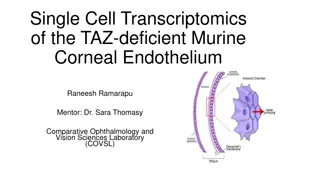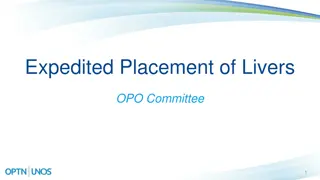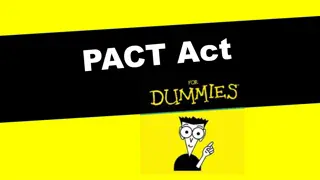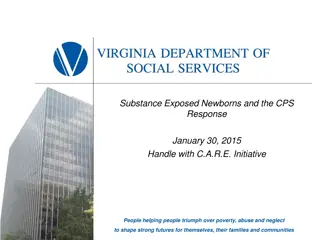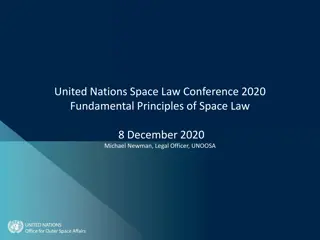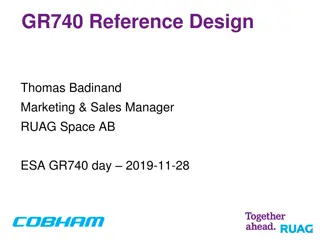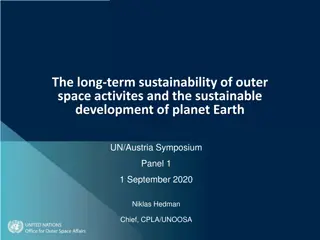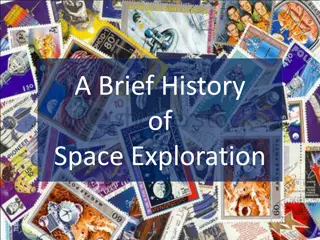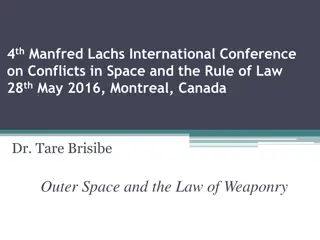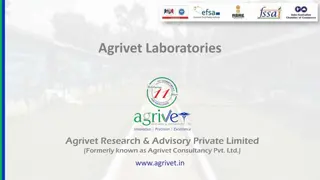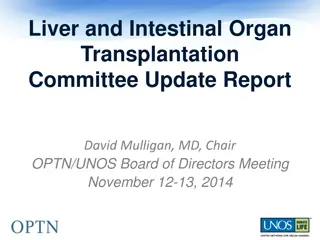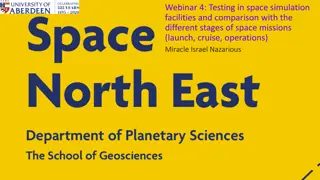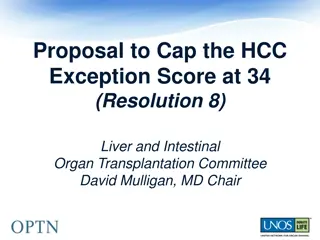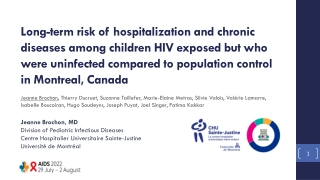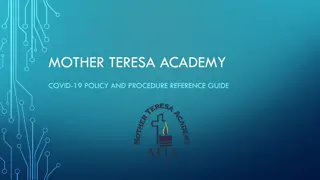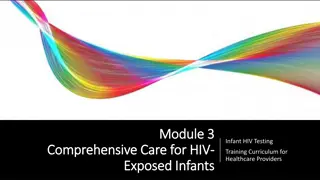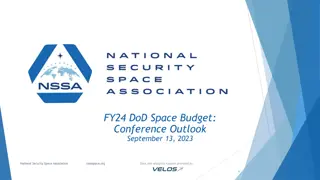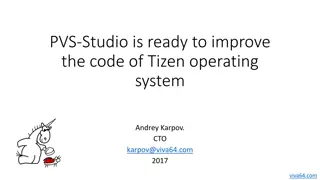Transcriptomics-based ML Analysis Predicts Space-Exposed Murine Livers
Transcriptomics-based machine learning (ML) analysis to predict the effects of space exposure on murine livers. The study involves a cross-disciplinary team of scientists from SAIC, NASA Langley Research Center, Scimentis LLC, University of North Carolina-Chapel Hill, University of Houston, AROSE, and Universal Artificial Intelligence LLC.
Download Presentation

Please find below an Image/Link to download the presentation.
The content on the website is provided AS IS for your information and personal use only. It may not be sold, licensed, or shared on other websites without obtaining consent from the author. Download presentation by click this link. If you encounter any issues during the download, it is possible that the publisher has removed the file from their server.
E N D
Presentation Transcript
Transcriptomics-based Machine Learning (ML) Analysis Predicts Space-Exposed Murine Livers Hari Ilangovan Prachi Kothiyal Katherine Hoadley Robin Elgart Newton Campbell Greg Eley Parastou Eslami SAIC | NASA Langley Research Center Scimentis LLC University of North Carolina - Chapel Hill University of Houston AROSE Scimentis LLC Universal Artificial Intelligence LLC
Translational Radiation Research and Countermeasures Formed by the Space Radiation (SR) Element under authority of the NASA Human Research Program (HRP) Mission: Mission: translate radiation research results based on animal studies to humans using bioinformatics and computational modeling Cross disciplinary team: SR Element Scientists, NASA Information Data & Analytics Services (IDAS) Data Scientists, Bioinformaticians & Computational biologists Janice Zawaski Deputy Element Scientist Brock Sishc Cancer Discipline Scientist Janapriya Saha CVD Discipline Scientist Robin Elgart Element Scientist Ryan Norman Element Scientist Parastou Eslami Project Scientist Prachi Kothiyal Bioinformatician Hari Ilangovan Data Scientist Greg Eley Bioinformatician Katherine Hoadley Computational Biologist
Mission Radiation Environments Long duration spaceflight (or even repeated short missions) will exceed current career will exceed current career radiation limits radiation limits meant to minimize cancer risk Cancer can seriously and permanently seriously and permanently impact astronaut long-term health Galactic Cosmic Radiation (GCRs) and microgravity are being studied using biological endpoints from rodent based models Cucinotta, Francis A, Myung-Hee Y Kim, and Lori J Chappell. Space Radiation Cancer Risk Projections and Uncertainties 2012, 2012, 186. Sishc, Brock J., Janice Zawaski, Janapriya Saha, Lisa S. Carnell, Kristin M. Fabre, and S. Robin Elgart. The Need for Biological Countermeasures to Mitigate the Risk of Space Radiation-Induced Carcinogenesis, Cardiovascular Disease, and Central Nervous System Deficiencies. Life Sciences in Space Research, June 14, 2022. https://doi.org/10.1016/j.lssr.2022.06.003.
Space Studies & Bulk RNA-Seq Data Heterogeneous Experiments Systemic Study Effects Biological and Technical Variability Translate results to astronaut relevant data sets Translate results to astronaut relevant data sets Genomics Research from Technology Networks. Recent Advances in Single-Cell Genomics Techniques. Accessed October 5, 2022. http://www.technologynetworks.com/genomics/articles/recent-advances-in-single-cell-genomics-techniques-324695.
Space Studies & Bulk RNA-Seq Data Differential Gene Expression Analysis & Meta Analysis Characteristics Characteristics of Studies with of Studies with RNA RNA- -Seq Data Seq Data Sample Sample Size, Size, n Between Studies: 1) D >> n 2) n1 n2 n3 x1 x2 x3 ... xn y ... ... x1 x2 x3 ... xn y ... Sparsity Sparsity Leverage best practices, lessons Leverage best practices, lessons learned (data handling, model learned (data handling, model assumptions, etc.) assumptions, etc.) ... x1 x2 x3 ... xn y ... ... Dimensionality Dimensionality, D high D D small n n How can we apply Machine How can we apply Machine Learning techniques? Learning techniques? Genomics Research from Technology Networks. Recent Advances in Single-Cell Genomics Techniques. Accessed October 5, 2022. http://www.technologynetworks.com/genomics/articles/recent-advances-in-single-cell-genomics-techniques-324695.
ML Applications to Omics Data & Space Biology Scope: Scope: Predicting space-exposed murine livers using transcriptomics data Dimensionality Dimensionality Reduction Reduction Supervised ML Supervised ML Methods Methods Generalization Generalization Interpretability Interpretability Transform or subset features Classification SF vs GC Independent Reproduced Validation Comparison to Current Standards Gene Ontology / Knowledge Bases How do you How do you validate validate results from a results from a ML analysis? ML analysis? Prediction Performance Balanced Testing Kernels Feature Importance Yang, Karren Dai, Anastasiya Belyaeva, Saradha Venkatachalapathy, Karthik Damodaran, Abigail Katcoff, Adityanarayanan Radhakrishnan, G. V. Shivashankar, and Caroline Uhler. Multi-Domain Translation between Single-Cell Imaging and Sequencing Data Using Autoencoders. Nature Communications 12, no. 1 (January 4, 2021): 31. https://doi.org/10.1038/s41467-020-20249-2.
Murine Liver Datasets All Studies: n (SF|GC) = (61|76) Samples subset to Spaceflight & Ground Controls Tissue = Liver RR-3 (4/08/16 5/11/16) Duration = {39,40,41} days Strain = BALB/c n (SF|GC) = 8 (4|4) RR-1 (9/21/14 10/25/14) Duration = 37 days Strain = C57BL/6J n (SF|GC) = 10 (5|5) Carcass Dissection only used per Nature paper 48 137 RR-6 (12/15/17 1/16/18) Duration {1,30,60} days Strain = C57BL/6NTac n (SF|GC) = 36 (17|19) RR-1 CASIS (9/20/14 10/25/14) Duration = 21 days Strain = C57BL/6Tac n (SF|GC) = 6 (3|3) 47 245 242 379 RR-8 (12/5/18 1/14/19) Duration {24,40} days Strain = BALB/cAnNTac n (SF|GC) = 59 (27|32) RR-9 (8/14/17 6/26/18) Duration = 33 days Strain = C57BL/6J n (SF|GC) = 18 (5|13) Beheshti, Afshin, Kaushik Chakravarty, Homer Fogle, Hossein Fazelinia, Willian A. da Silveira, Valery Boyko, San-Huei Lai Polo, et al. Multi-Omics Analysis of Multiple Missions to Space Reveal a Theme of Lipid Dysregulation in Mouse Liver. Scientific Reports 9, no. 1 (December 16, 2019): 19195. https://doi.org/10.1038/s41598-019-55869-2.
Any single study too small to fit ML models Why combine studies? Murine Liver Data Sets Applicable Models Sample Size Heterogeneity Generalization Heterogeneity needs to be addressed before model training before Beheshti, Afshin, Kaushik Chakravarty, Homer Fogle, Hossein Fazelinia, Willian A. da Silveira, Valery Boyko, San-Huei Lai Polo, et al. Multi-Omics Analysis of Multiple Missions to Space Reveal a Theme of Lipid Dysregulation in Mouse Liver. Scientific Reports 9, no. 1 (December 16, 2019): 19195. https://doi.org/10.1038/s41598-019-55869-2.
Raw Data cluster by Experiment Pre-Filtering & Normalization 1 Non- PC2 Pseudogenes Count Sample Coverage PC1 Within-Study Normalization Concatenation- Based Integration
Dampened Experiment Clustering 1 Pre-Filtering & Normalization PC2 Non- Pseudogenes Count Sample Coverage PC1 Prefilter & Transform Prefilter & Transform 2 Within-Study Normalization PC2 Concatenation- Based Integration PC1
Label by Space Flight ( ) vs Ground Control ( ) 1 3 PC2 PC1 Prefilter & Transform Prefilter & Transform 2 PC2 PC1
n now greater than any individual study 1 3 PC2 PC1 Dimensionality Dimensionality Reduction Reduction Prefilter & Transform Prefilter & Transform 2 4 PC2 PC1
Classification as Space Flight or Ground Control ... Methods selected based on previous application to NGS data sets Support Vector Machines (SVM Linear Discriminant Analysis (LDA SVM) Random Forest (RF LDA) RF) K-Fold Cross Validation Balanced between treatments
Models Trained without overfitting Min. prediction accuracy of 87% Model parameters modified for small sample size (even with concatenated studies) RF Tree Depth SVM Regularization (c) LDA Shrinkage
BP Interpretation of ML with DESeq2 Gene Set Enrichment Analysis (BPs) Min. prediction accuracy of 89% Accuracy similar between methods, but but SVM output better for interpretation Model parameters modified for small sample size (even with concatenated studies) RF Tree Depth SVM Regularization (c) LDA Shrinkage
Enhanced Confirmation of Results Support Vector Machines RR1 RR1 Studies: Studies: RR1 + RR1 + RR3 + RR3 + RR6 + RR6 + RR8 + RR8 + RR9 RR9 + + RR1 Signal RR1 Signal not squashed not squashed by other by other studies studies Results from GeneLab study Studies: RR1 + RR6 + RR9 Studies: RR1 + RR6 + RR9 GO BPs from independent DESeq2 Gene Set Enrichment Beheshti, Afshin, Kaushik Chakravarty, Homer Fogle, Hossein Fazelinia, Willian A. da Silveira, Valery Boyko, San-Huei Lai Polo, et al. Multi-Omics Analysis of Multiple Missions to Space Reveal a Theme of Lipid Dysregulation in Mouse Liver. Scientific Reports 9, no. 1 (December 16, 2019): 19195. https://doi.org/10.1038/s41598-019-55869-2.
Conclusions Combined study view & data preprocessing are necessary for ML applications in Space Studies Validation through intersection between classical analysis and ML methods Machine learning methods can complement classical omics if data is handled appropriately DESeq2 ML Classifiers may show similar performance, but SVM more useful for interpretation Non intersecting set may indicate area for further exploration
Conclusions -Novel Analysis Methodology Combined study view & data preprocessing are necessary for ML applications in Space Studies Validation through intersection between classical analysis and ML methods Machine learning methods can complement classical omics if data is handled appropriately DESeq2 ML Classifiers may show similar performance, but SVM more useful for interpretation Non intersecting set may indicate area for further exploration Future work Independent Independent Validation with Validation with External Data Set External Data Set
Thank you! NASA Space Radiation Element Human Research Program Johnson & Langley Centers NASA GeneLab LaRC OCIO Data Science Team Janice Zawaski Deputy Element Scientist Brock Sishc Cancer Discipline Scientist Janapriya Saha CVD Discipline Scientist Robin Elgart Element Scientist Ryan Norman Element Scientist Parastou Eslami Project Scientist Prachi Kothiyal Bioinformatician Hari Ilangovan Data Scientist Greg Eley Bioinformatician Katherine Hoadley Computational Biologist
Appendix: Process Flow Diagram Classifier Inference Interpretation Pre-Filtering & Normalization Feature Selection Classifier Training Receiver Operator Characteristic Non- Random Forest MRMR Selection Pseudogenes Feature Importance Min. Counts and Sample Coverage Support Vector Machines Full Ranking Analysis Selection Overlappin g Set Analysis Linear Discriminant Analysis Within-Study Normalization Gene Ontology (BPs) Concatenation- Based Integration
Feature Selection Methods ?00 ??0 ?0? ??? Minimum Redundance Maximum Relevance (mRMR) Feature Selection Input data X = ? ? ?0 : ?? Target vector c in the form of ? = ? 1 Relevant Features Max Relevance Max Relevance Useless Features Min-Optimal Subset Min Redundancy Min Redundancy Redundant Features All Relevant Subset


